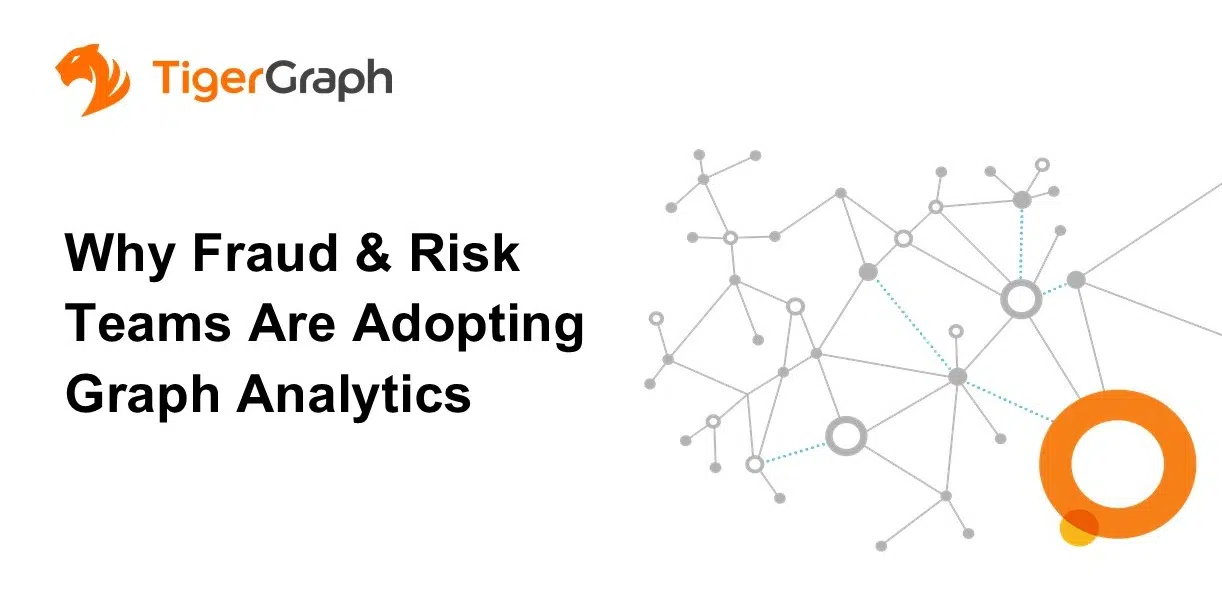Why Fraud & Risk Teams Are Adopting Graph Analytics
Fraud isn’t just a data problem—it’s a relationship problem. This new reality is something industry leaders are quickly coming to terms with as the scale and sophistication of fraud outpaces the capabilities of traditional detection tools. Today’s fraud isn’t confined to a single account, transaction, or user profile—it’s distributed, coordinated, and adaptive.
This shift in the threat landscape leaves conventional fraud detection strategies in the dust. Rules-based systems and supervised models may catch simple patterns, but they struggle with complexity. Modern fraudsters exploit gaps between systems. They spin up synthetic identities that look legitimate on paper. They share devices, mimic behavioral norms, and hide in the noise—counting on siloed tools to miss the connections that matter.
That’s why fraud detection must evolve. It’s no longer enough to ask whether a single transaction looks suspicious. Teams need to ask what that transaction is connected to—and what those connections reveal. In other words, they need relationship intelligence.
Graph analytics makes that possible. By mapping and analyzing the relationships between people, devices, accounts, and behaviors in real-time, graph technology gives fraud and risk teams the context they’ve been missing, and the ability to act before threats escalate.
The Blind Spots in Traditional Detection
Most traditional fraud systems rely on either supervised learning—where models are trained on examples of past fraud—or rules-based logic, where specific conditions trigger alerts (like a large withdrawal or a login from a new location). These tools work well when fraud follows predictable patterns. But modern fraud doesn’t play by those rules.
Today’s attackers are more creative and coordinated. For example, synthetic identity fraud blends real and fake information to create new, seemingly legitimate accounts that slip past standard checks. Other schemes involve slow-drip tactics, where no single action looks suspicious, but together they form a clear fraud pattern—one that only becomes obvious when connections are analyzed over time. We also see cross-platform fraud, where bad actors move across apps, regions, or systems to stay under the radar. And then, there are bots and adversarial AI, which learn how detection systems work and adapt in real-time to avoid triggering alerts.
These traditional systems focus on individual events and ask, “Is this transaction unusual?” But that question alone is no longer enough. The better question is: “What is this transaction connected to—and what does that reveal?” Fraud hides in the relationships between events, entities, and behaviors.
Graph analytics is the best next step, as it makes it possible to model and analyze those relationships, revealing patterns that aren’t visible in isolated data points.
Graph Is Built to Model Fraud Like It Actually Works
Graph databases store data as nodes (entities) and edges (relationships), making them uniquely suited to capture the complexity of fraud in the real world.
Unlike traditional databases that flatten data into tables and rely on predefined JOIN paths, graph technology allows teams to follow the actual flow of activity—tracing how people, devices, accounts, transactions, and behaviors are linked. This makes it possible to ask more contextual, layered questions: “Has this user interacted—even indirectly—with a known fraud ring?” “Does this device appear in multiple high-risk transactions?” “Are these accounts part of a rapidly forming behavioral cluster?”
Most graph databases can reveal these connections, but many are optimized for offline analysis or visualization. They’re effective at surfacing patterns after the fact, but often lack the performance or flexibility needed to detect fraud as it’s happening—especially in environments with billions of relationships and constantly changing data.
That’s where TigerGraph takes things further. It’s built for deep, multi-hop analytics on live data streams, with architecture designed to support real-time operations, not just static queries. Teams can go beyond spotting isolated anomalies to tracking coordinated strategies in motion. They can model behavioral thresholds, detect cascading activity across accounts and devices, and reason through patterns that evolve over time—without the delays or bottlenecks that typically come with scale.
In short, while standard graph systems help map the shape of fraud, TigerGraph enables teams to respond to it—immediately, intelligently, and at enterprise scale.
From Alerts to Insight with Graph Technology
What makes graph analytics so transformative for fraud and risk teams isn’t just that it flags anomalies faster—it’s that it reveals the why behind them. It enables a shift from chasing alerts to reasoning over behaviors. A sudden spike in account creation might seem harmless—until graph analysis shows that all those accounts link back to the same compromised IP. A routine wire transfer may pass automated checks—until it’s revealed to be just a few hops away from a known shell entity. A login from a new device might be ignored—unless that device accessed 20 other accounts in the last 10 minutes.
This level of connected insight is critical as fraud becomes more adaptive, more distributed, and harder to spot through surface-level signals alone. Graph analysis allows teams to follow the full trail of interactions and identify emerging patterns before they escalate. It’s not just faster—it’s smarter. And it’s what allows teams to move from reacting to incidents to recognizing intent in motion.
Why the Shift Is Happening Now
Fraud and risk leaders are being asked to do more—and to do it faster—with less margin for error. They must stop fraud earlier in the cycle, reduce false positives that harm customer experience, meet rising regulatory demands for transparency, and handle an ever-expanding volume of data. That’s a tall order for legacy systems built around isolated events and batch-mode processing.
Graph analytics is meeting this moment, giving teams the scale, speed, and context to monitor relationships in real time and adapt to threats as they emerge. And with platforms like TigerGraph—purpose-built for deep, multi-entity analytics—teams can continuously scan for coordinated activity, model behavioral thresholds, and surface risk across systems and silos.
Because analysis happens inside the graph—not exported to external tools—TigerGraph delivers results that are explainable by design. Its in-graph computation engine supports real-time analytics while preserving the full context of each decision. Features like accumulators act as smart counters during a query, helping track behaviors such as how often a device is reused or how many accounts link to the same identity. This allows for more complex, stateful reasoning—essential for identifying coordinated fraud patterns as they develop.
This built-in context gives teams a clear view into how and why an alert was triggered. They can trace the path through related accounts, devices, or transactions that flagged the behavior—without relying on disconnected tools or opaque algorithms.
And because the output remains grounded in the graph’s structure, results are inherently auditable. That means teams can not only act with confidence but also explain and justify those decisions to internal stakeholders, regulators, or auditors. In a world where transparency is as important as accuracy, that kind of traceability is a strategic advantage.
The real impact isn’t just technical though, it’s strategic. Teams that adopt graph aren’t just upgrading infrastructure—they’re changing how they think. They’re asking better questions, connecting the dots faster, and building fraud defenses that evolve as quickly as the threats they face.
Fraud is no longer just an event to block. It’s a behavior to understand. And that shift—from detection to understanding is exactly why graph analytics redefines how modern enterprises fight fraud. Reach out to learn more about this today!

